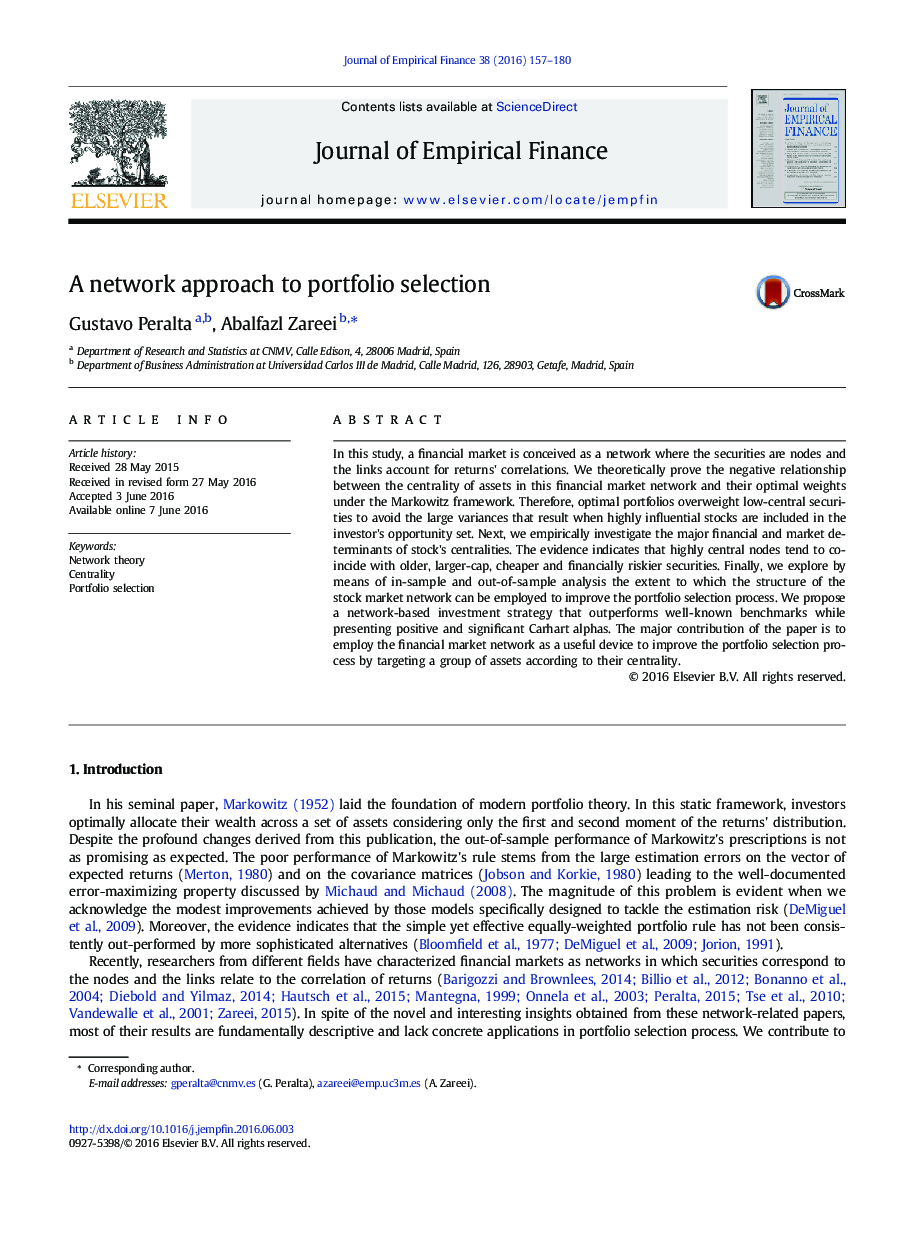| Article ID | Journal | Published Year | Pages | File Type |
|---|---|---|---|---|
| 958629 | Journal of Empirical Finance | 2016 | 24 Pages |
•Low-central stocks receive higher weights in optimal allocation.•Financial and market variables are major drivers of stocks' centrality.•We construct a network-based investment strategy that performs well out-of-sample.•Our network-based strategy results in positive and significant Carhart's alphas.
In this study, a financial market is conceived as a network where the securities are nodes and the links account for returns' correlations. We theoretically prove the negative relationship between the centrality of assets in this financial market network and their optimal weights under the Markowitz framework. Therefore, optimal portfolios overweight low-central securities to avoid the large variances that result when highly influential stocks are included in the investor's opportunity set. Next, we empirically investigate the major financial and market determinants of stock's centralities. The evidence indicates that highly central nodes tend to coincide with older, larger-cap, cheaper and financially riskier securities. Finally, we explore by means of in-sample and out-of-sample analysis the extent to which the structure of the stock market network can be employed to improve the portfolio selection process. We propose a network-based investment strategy that outperforms well-known benchmarks while presenting positive and significant Carhart alphas. The major contribution of the paper is to employ the financial market network as a useful device to improve the portfolio selection process by targeting a group of assets according to their centrality.
